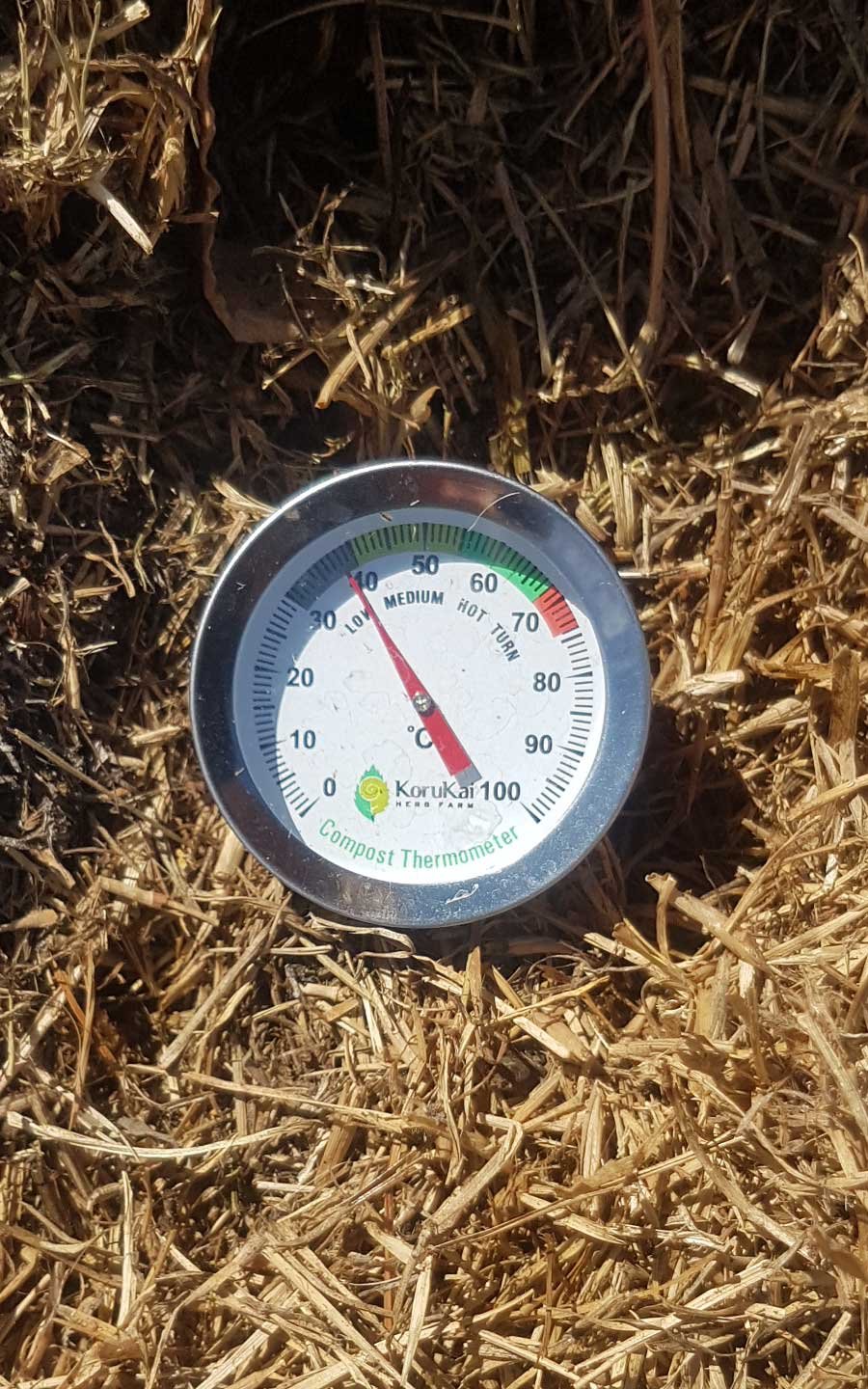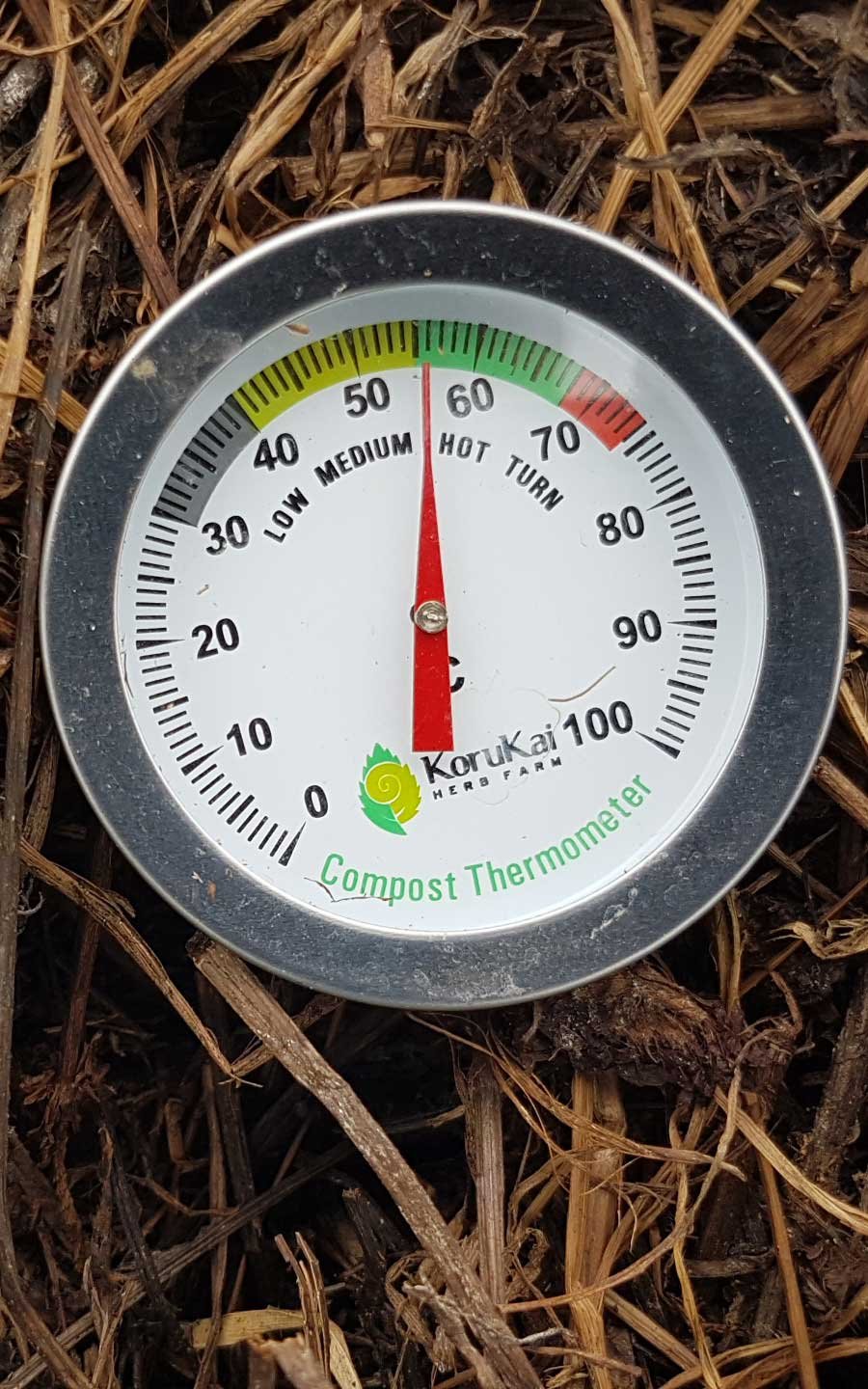A few weeks ago, I wrote a blog about building a big compost pile. In that blog, I noted you could cook a chicken in a hot compost pile if you wanted to. That’s a story I was told and it was a bit of a throw-away line, I hadn’t actually tried it myself. I don’t eat chicken, but after a request by a friend, I looked into it. It does appear that cooking in compost is really a thing.
The tweet (sent from a locked account) asked if I could cook a potato in my compost. It sent me down a rabbit hole. In my last blog, cooking in compost was a way of describing how hot my compost could get. I wasn’t going to actually do it. But then I found a whole heap of people who did try it, and who found it worked!
As I went further, the connection to sous vide cooking was unavoidable. This felt like something I could try with some science behind it. Take the science behind sous vide, and apply it to cooking in compost. Why not? Sounds like some good blog content.
What is sous vide?
I am absolutely no expert – but in a nutshell – sous vide is a cooking method. Food is vacuum-sealed in plastic. Then it is placed in a bath of water that is set to a constant temperature below 100ºC. It’s left there for a longer-than-usual period of time.
This method means the food is cooked right-through to the perfect temperature. The vacuum seal means the food is cooked in its own juices, keeping it tender. This is handy because sealing the food is also pretty important when cooking in degrading horse manure. Here is a more in-depth explanation about sous vide cooking from people who actually are experts if you want to learn more.
The main difference between a cooking technique that has been used in restaurants for decades, and what I’m planning to do is I’ll be cooking in a compost medium, rather than water.
What can be cooked in compost?
In my research, I found people who tried baking eggs, rice, steak, vegetables, kūmara, a full duck roast – and even a cake in their hot compost piles. They had varying levels of success.
The temperatures of a hot compost can range from 50-70ºC. Any hotter than 70ºC, and you begin to have a problem with the bacteria that are giving you the heat in the first place. Again, here is a more in-depth piece from someone who knows more about hot composting and ideal temperatures to explain further.
The temperature is important because it turns out that’s the limiting factor to success when cooking in compost. In particular, it limits which foods you can cook.
Going back to the sous vide comparison, humans have actually worked out what temperatures things should be cooked at, and for how long using this method.
If the compost is at 64ºC, then I can poach an egg. However, the ideal composting temperature range is not hot enough for a lot of vegetables, including corn and potatoes, which need to be cooked sous vide at 85ºC. If my compost were that hot, it would begin making alcohol and could become a fire hazard. Notably, rhubarb is the exception. I could stew some rhubarb at 60ºC.
Meats, however, can be cooked at a lower temperature. A medium-rare steak, for example, would need to be between 54ºC and 58ºC. At the time my compost was reading 50ºC, so that felt doable.
Tools and preparation
I was convinced it was possible to cook food in compost, but that there was a limit on what I could cook. I also recognised that the temperature of the compost was important to monitor for both the health of the compost pile, and the success of my cooking.
So I invested in a compost thermometer and bought a couple of sirloin steaks on special at the supermarket. The thermometer showed up in a few days, and when I took my reading, the pile was at 60ºC.
But then, life got in the way. I froze the steak. The temperature in the pile fell to 40ºC – too cool to cook a steak. We had to turn it.
Turning the compost
It took a few weeks to get the timing right, but toward the end of February, Richard and I turned the pile. I was expecting it would take 4-7 days after turning before we would be eating compost steak.
We followed advice and put the material that had been on the outside of the pile, onto the inside of the new pile. I added 90 litres of water as we went. We also built the pile higher and shorter than I had originally.




Then, compost watch began. 24 hours after turning the pile, it was at 31ºC. The next day, it was 38ºC. Then, it kicked up a notch, reaching 53ºC on day three. On day four, we hit 56ºC, and it was time to defrost the steak.
Cooking in compost
It was actually a little anti-climatic. I dug down from the top, aiming for just above the thermometer. Once I was deep enough, I chucked the steak in, covered it back up. Then I had a nap.
Today, I am cooking steak in my compost heap. The temperature is high enough so I dug a hole in the top of the heap, threw it in, and will come back in 4 hours. pic.twitter.com/E4QVCt198Q
— Kat 👩🌾 (@katjnz) March 2, 2021
The steak itself was packed in a double-layer of plastic. I figured this gave an extra layer of protection – one layer touches the compost, while the second layer touches the meat, with a double-barrier.
Four hours later, I went back, dug back down, and pulled out the steak.
And what do you know? It felt cooked. It was hot. I rinsed the outside layer, and pulled out the inner-bag. I tipped it onto a clean plate. The internal temperature of the meat was 53ºC.

I seared the steak quickly on the BBQ to add colour – a technique also used by restaurants – and served that sucker up for dinner.
It turns out, steak cooked in a pile of rotting hay and horse manure is freaking delicious. Tender, succulent. It’s not as good as real sous vide – I have absolutely had better steaks. But that also might come down to the cut I used (sirloin). This would be an interesting experiment to try after we get a beast in the freezer and have a few cuts to choose from.
This was a fun experiment. It’s limited in what you can cook, and not everyone has the space and materials for a hot compost pile – I’m not sure if it’ll catch on as a mass cooking technique. But it does work. It can be done. It’s worth trying if you are in a position to try it – just do a bit of reading and thinking first.



If you ever have a long power outage, you won’t have to fire up the barbie.
Cheers
Joce